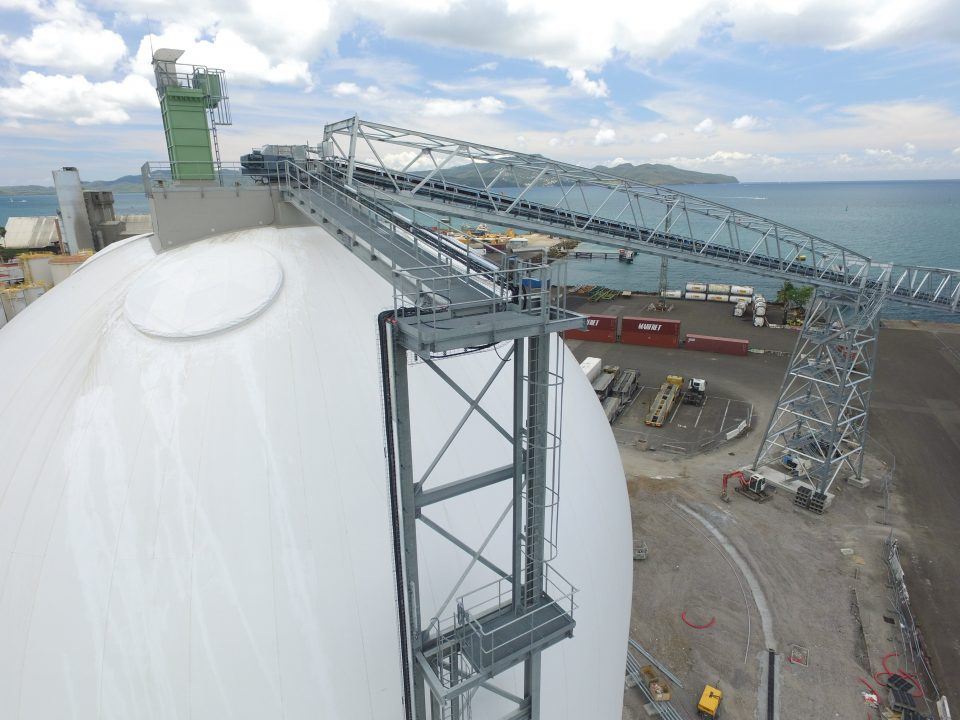Until now, rectangular explosion venting has been the norm in storing products prone to deflagration, but Dome Technology’s team has pioneered a round hybrid model that will be installed on bulk-storage domes for two biomass companies and a sugar company in 2016.
“No matter what system, you’re creating a weak spot with panels, whether it’s a pre-manufactured rectangular panel or a metal cladding piece. This is a round panel, which in a dome is nice because you don’t get sharp corners for stress concentrators,” said engineer for Dome Technology Adam Aagard.

The proprietary explosion vents are comprised of a metal ring fastened directly to the dome with pressure-release screws; these screws are engineered to remain secure through dead, live and wind loads but will release should interior pressure reach critical levels. To the metal ring is fastened another ring, this one attached to a geodesic steel lattice covered with fabric. The lattice helps the fabric hold its shape, and the fabric acts as a waterproofing shield protecting product and helping maintain the dome’s interior climate.
When an explosion occurs, the fabric accepts the load and transfers it uniformly around the ring’s circumference. “Because it’s circular we can predict the load going to each of the fasteners really well,” said Jason South, Dome Technology Vice President of Engineering, Research and Development. “If it were rectangular, the pressure going to each fastener could be different,” and more difficult to estimate.
Each explosion vent is unique to the project. Dome Technology’s engineering team provides building parameters to explosion experts who calculate discrete finite element modeling and computational fluid dynamics, modeling the explosion to determine the amount of area required for the blast panels such that the pressure only reaches a certain level before fasteners release, South said. The modeling information also provides information about the load imposed on the dome structure to aid in the structural engineering.
With a defined amount of required surface area, Dome Technology’s team sizes the explosion vents and places them in locations where they’ll vent adequately and function structurally.
According to South, this type of explosion venting is durable and strong; the only failure point is at the fasteners, which pop at the precise pressure threshold. Vents are tethered to the dome structure, so they do not become a projectile when loosed. Usually upon an explosion event, the vents and the surrounding venting structure are damaged beyond repair and will need to be replaced, but in this arrangement the dome and base ring of the vent will likely be intact and functional. The outer ring and the fabric can be replaced very economically.
Companies storing products prone to deflagration — sugar, grain, coal, wood pellets and more — ought to explore the right explosion venting for their specific application. Vents should be engineered specific to each project — a necessity since each facility needs engineering specific to the likely pressure relative to the stored product and the structure’s storage volume.
Editor’s note: This article ran in its entirety in the June issue of International Cement Review. To read the full text, which includes a checklist of fire-prevention measures, visit ICR’s website and click “subscribe” or click here for the issue’s table of contents.